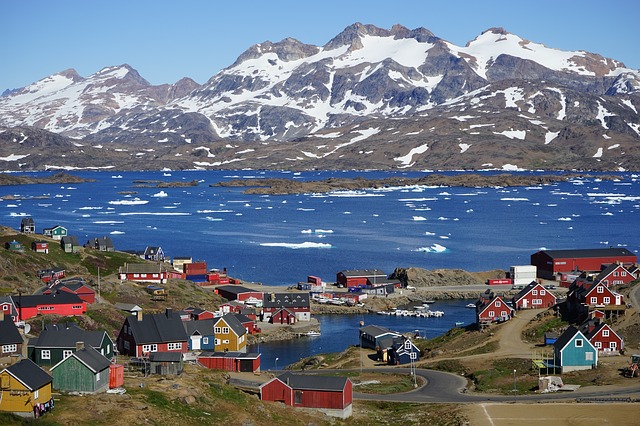By Tim Lambert
The Inuit in Greenland
The first inhabitants of Greenland were the Inuit. They lived in Greenland for long periods but there were also times when Greenland was uninhabited. The first people to live in Greenland were the Saqqaq people from about 2,500 BC to 900 BC. Greenland was then uninhabited until about 500 BC when the Dorset people came. They lived in Greenland till about the 1st century AD. The Thule people arrived in Greenland in the 10th century.
The Vikings in Greenland
The Vikings arrived in Greenland at the end of the 10th century. They were led by Erik Thorvaldsson (c.950-1003), known as Erik the Red because of his red hair. Erik first sailed to Greenland about 982, and he liked what he saw. Erik the Red is said to have given the country its name, ‘Greenland’, hoping it would attract settlers. At any rate, around 985, Erik led the first Viking settlers to Greenland. He set out with 25 ships, but only 14 made it.
The Vikings were able to live in Greenland because at that time the climate was milder than it is today, and the settlers were able to live by farming. The Vikings made two settlements in Greenland, a Western and an Eastern settlement. Eventually, the European population of Greenland rose to over 3,000. In 1126, Greenland gained a bishop, and in 1261, Greenland became part of Norway. Then in 1380, Norway was joined with Denmark, and Greenland came under Danish rule.
Throughout history, the climate of the Earth has varied. In the 10th century, the Earth was relatively warm. That allowed the Vikings to settle in Greenland. However, in the early 14th century, the Earth cooled, spelling doom for the colonies in Greenland. The Viking settlements in Greenland died out in the 15th century.
Viking life in Greenland had the same characteristics as life elsewhere. In 1578, the Englishman Martin Frobisher landed on Greenland. Then, in 1585 and 1587, John Davis explored the eastern coast, and the Davis Strait is named after him. From the late 17th century, European whalers visited Greenland.
Modern Greenland
Europeans returned to Greenland permanently in 1721 when the missionary Hans Egede (1686-1758) went to evangelize the Inuit. In 1728 Egede founded Godthab (now called Nuuk). Greenland formally came under Danish rule again in 1729.
The Inuit artist Aron of Kageq was born in Greenland on 9 April 1822. He is known as the father of Greenlandic painting.
In 1888, a Norwegian named Fridtjof Nansen led the first expedition to cross Greenland.
In 1940, the Germans occupied Denmark, but afterward, in 1941, the USA established bases in Greenland. In 1953, Greenland ceased to be a colony of Denmark and became a province (an integral part of the country). The Bank of Greenland was founded in 1966, and in 1973, Greenland with Denmark became part of the EU.
However, links with Denmark weakened. In 1979, Greenland was granted home rule. In 1982, the people of Greenland voted to leave the EU and ceded it in 1985. Also in 1985, Greenland obtained a flag. Greenland was granted more autonomy in 2009. Kalaallisut was made the official language of Greenland instead of Danish. Today, the official name of Greenland is Kalaallit Nunaat. However, the queen of Denmark is still the head of state of Greenland.
Meanwhile, Radio broadcasting in Greenland began in 1958. Television broadcasting began in 1982. Kalaallit Nunaata Radioa is the Greenlandic broadcasting corporation.
In 2016, Greenland banned all corporal punishment of children.
In 2024, a new international airport opened in Nuuk.
In 2025, Greenland’s population was 56,000. The capital, Nuuk, has a population of 19,000.

Today, the main industry in Greenland is fishing. However, Greenland has great tourism potential. Greenland is also very rich in minerals.
Iceland Independence Day is 17 June.
Last Revised 2025